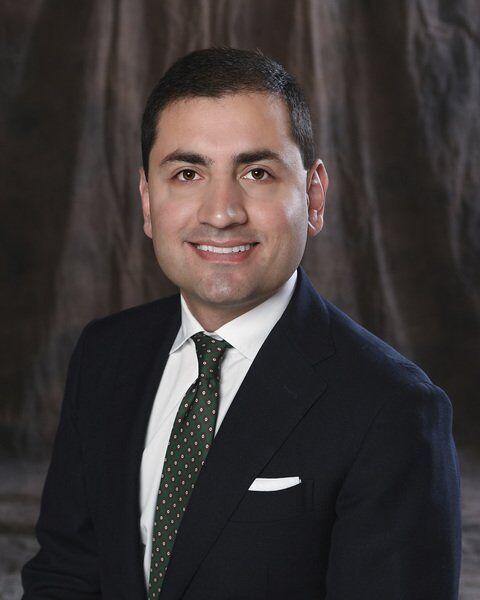Thomas Barwick DigitalVision | Getty Images
According to the IRS, in July, the first of six monthly child tax payments was made to more than 35 million households with about 60 million children.
The money represents an advance on the loan for 2021 and represents an improvement on the existing tax credit for children. For 2021, the loan will increase to $ 3,000 from $ 2,000 per child under the age of 17 and provide an additional $ 600 in compensation for children under the age of 6.
If they do not choose, most families will receive half of the loan in monthly payments of $ 250 per month for children between 6 and 17 and $ 300 per month for children under 6 years of age. In July, the average payment sent to families was $ 423, according to the IRS.
Full credit is available for all children under the age of 17 in families with a gross income adjusted for 2020 or 2019 of less than $ 75,000 for single parents and $ 150,000 for a married couple jointly applying and ending up for individuals earning $ 95,000 and married couples who jointly file $ 170,000, although they would still be entitled to a regular child tax credit.
More from Invest in You:
Faced with a high unemployment rate, people who have been in prison before start a business
Employers are planning larger pay increases. How to negotiate for even more
10 jobs from home where six figures are paid
Approximately 90% of families in the U.S. will receive child taxes and advances, according to the IRS. Although the expansion is aimed at helping low-income families, it is also a significant incentive for middle-class Americans affected by the coronavirus pandemic.
For many families, the extra money will be used to reimburse bills, pay household expenses such as utilities and food, or buy new school clothes and other necessities for children. But others may have the opportunity to save or invest money that they will use for their children in the future.
“The first thing you need to do is assess‘ Did things take care of my household? ’” Said Michael Foguth, founder of the Foguth Financial Group of Brighton, Michigan. Once you determine that you are okay with your daily expenses and have a solid emergency fund on hand, you can start considering other things related to money, such as investing to thrive, he said.
Here are some ideas that experts suggest to help grow any child tax payments you receive.
Invest in a college savings plan
One of the great ways to use the extra money is to put in a savings plan of 529 colleges. See the article : Good Planning Can Reduce the Chances of Taxes Hurting Your Retirement Funds. Most states offer such plans, and if the money is used for approved education costs, it can grow and be withdrawn tax-free.
“We know that many families are just struggling day in and day out, but there are also families who have the ability to really plan and use those resources for the future,” said Mary Morris, CEO of Virginia529 and ABLEnow.
The money in the 529 account can be used before college, although there is a withdrawal limit of $ 10,000 per year for elementary, high school, or high school expenses. And even if your child doesn’t go to higher education, the bill can usually be passed on to another user. This could be a brother or sister, a parent, a niece or a nephew.
In some states it can also be tax relief for money deposited in plan 529.
“Using these tax breaks is a good way to get started,” she said, adding that some people contribute small amounts over time, like $ 50 a month. Although it is not a large amount, it adds up over time and grows exponentially because it is mostly invested in the stock market.
“If you really don’t need it right away, you can really do something significant,” she said.
Open an ABLE account
If you have a child with a disability, you can also save part of the money from tax benefits on your ABLE account, which is a savings program with a favorable tax for people with disabilities. See the article : 10 Roth IRA Basics You Need to Know.
Like the 529 savings plan in college, families can save on bills and withdraw money tax-free when used for qualified disability expenses such as care, education, living expenses, food and more.
Starting early savings on such an account can help parents manage expenses later, especially for children, including adult dependents who are unable to be independent.
“It gives you an advantage and you can develop some resources,” Morris said.
Even if you have a child with a disability who may later become independent, an ABLE account can be a good idea, she said.
Having an ABLE account for an individual with a disability can be of great help in ensuring that they can still access other federal assistance programs. This is because money in an ABLE account does not count toward many asset tests that can limit eligibility for individuals who have more than $ 2,000 in resources, such as savings accounts, a retirement plan, or other liquid assets.
Save on your investment account
Parents could also put money into their brokerage account, or if they were earning, into an individual retirement account, such as the Roth IRA, and make their child a beneficiary. Read also : Using Roth IRA As Place to Park Emergency Funds – RealClearMarkets. That way you can invest money in the stock market and start making money from investing, Foguth said.
He suggests to parents to look at things like index funds, mutual funds and exchange traded funds in the long run, in order to invest with less risk. If you do, you’ll save for later, and it’ll also help you outpace inflation that has been ticking and eroding spending power lately.
“You probably won’t double the money in a few months,” he said. “But if things stay normal, you’ll gradually move in the right direction on much greater occasions than the bank.”



